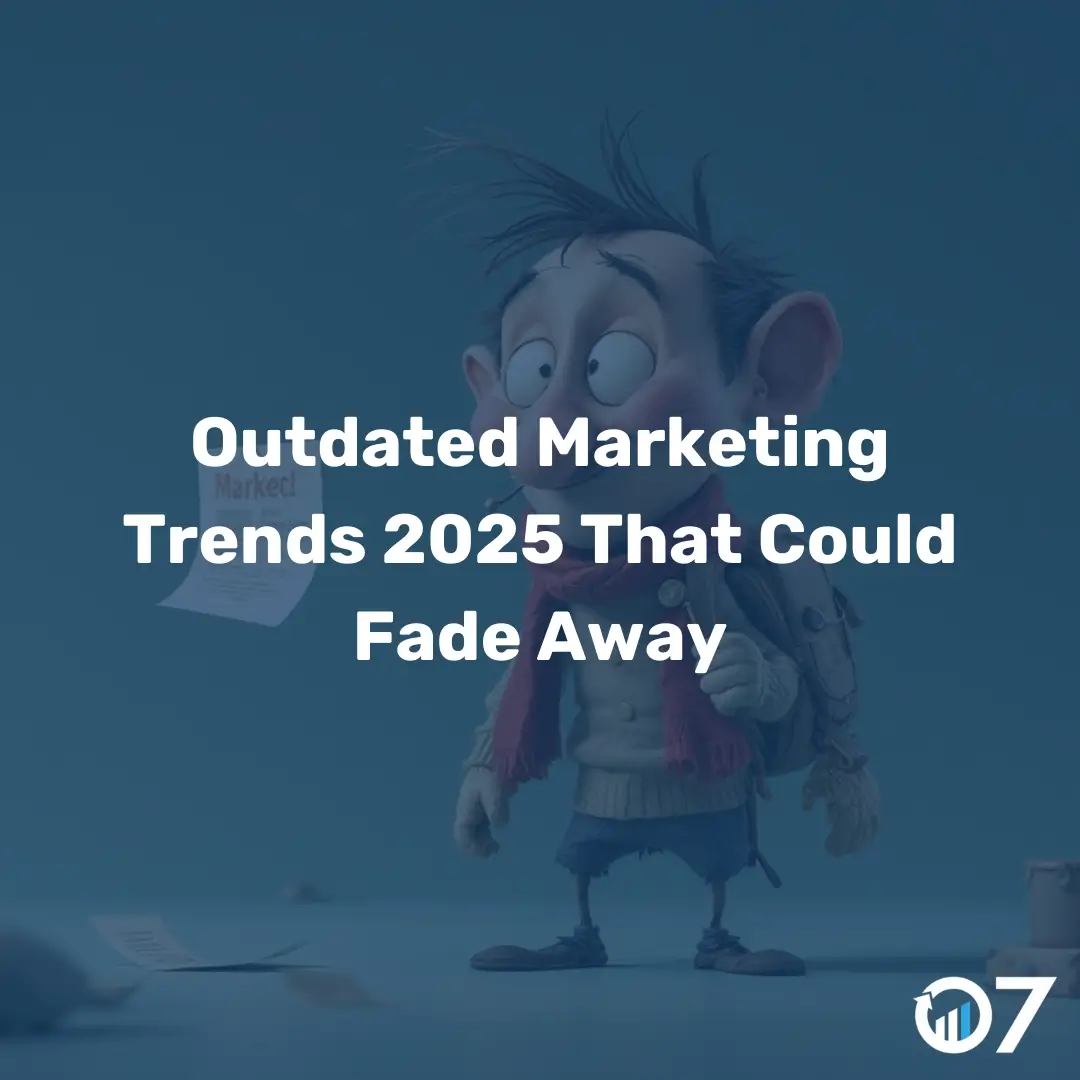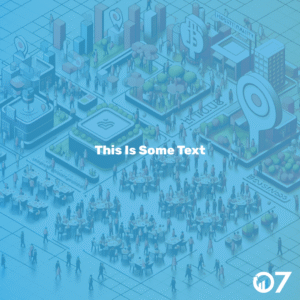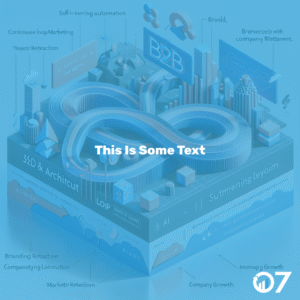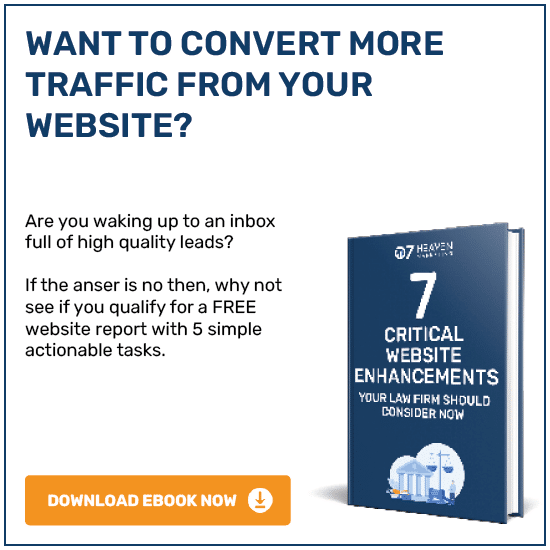Outdated marketing trends 2025 are something every business owner should watch out for. Staying current with marketing strategies ensures your business remains competitive and relevant.
As marketers, we need to align our strategies with ever-changing buyer behaviours. This means we must keep an eye on potential outdated marketing trends in 2025.
If we want to stay effective, we need to stay current. Let’s take a look at four marketing trends that might not survive in 2025 and how to pivot from them.
Marketing Trends That Might Not Survive in 2025
1. Mass Marketing
If you market to everyone, you market to no one. This has been known for ages, but it’s becoming more critical as consumers demand a personalised touch from brands.
It feels nice to open an email or app and get a message no one else has received. It feels special and exclusive, and most people agree on this.
According to Twilio’s State of Personalisation report, 49% of consumers say they’ll likely become repeat buyers after a personalised shopping experience with a retail brand.
Moreover, Zendesk found that 70% of customers expect anyone they interact with at a business to have the full context of their previous engagement and actions.
So, they’re not messing around. Mass marketing, which involves general messaging and a “one size fits all” approach, needs to be abandoned.
Successful marketing in 2025 will require greater emphasis on personalisation and community engagement. Last year, this was the number one area marketers reported focusing on.
This year, our research found that 85% of marketers consider their strategy somewhat or very personalised. On top of that, about 94% said personalisation impacted sales.
Grace Kao, Head of Global Business Marketing at Spotify, discussed the importance of creating emotionally resonant experiences tied to users’ personal moments as a brand.
She said, “It’s about the value you’re actually bringing to your customer. For us at Spotify, what we’re really trying to bring is some sort of personal element.”
“It’s a ‘Oh, wow! Thank you for providing something that speaks to me specifically.’ That’s what keeps users coming back, feeling like their moments matter.”
How can you pivot in 2025?
Learn everything you can about personalising your marketing and brand experiences. This can look like:
- Addressing your buyer by name in emails
- Making product recommendations based on past purchases on your website
- Sending emails with content suggestions based on purchases or past behaviour
- Checking in and proactively reaching out with support or help with recent purchases
- Asking for feedback
And don’t forget: AI can help with scaling all of this. More on that here:
- How to Use AI Personalisation Tactics to Scale Marketing Growth
- Top 5 Use Cases for AI Personalisation in Marketing
2. Link Building
For over a decade, successful content marketing has largely been focused on creating keyword-packed website/blog content and earning traffic and links back to their websites.
However, marketers in our survey rated visual formats like short-form video, images, and live streaming higher in return than those like blogging.
Buyer behaviours are increasingly favouring social media and AI chatbots, and Google’s EEAT regulations are not letting up.
With all these factors, it’s clear traditional search tactics alone won’t cut it anymore. Kevin Indig from Toast predicted that traditional SEO tactics, such as link building, will decline in importance.
He explained, “In my worldview, the idea of links shifts a bit more to mentions — In other words, what context and how often is our brand mentioned? The more often your brand is mentioned across the web, the more people potentially hear about it.”
Indig isn’t just referring to getting discovered through search engines but also through mentions and discussions on social media, in the press, and eventually by AI assistants.
“There’s something to be said about the training data,” He continued. “Essentially, you want to grow the surface at which it is possible that an LLM finds your brand in a certain sentiment.”
“When the New York Times, for example, writes about your company being the most successful B2B company, that obviously has a different weight than when somebody on Reddit says, ‘Oh, you know, another company is better.’”
“We don’t yet know the exact impact on your visibility in generative AI or in LLMs based on those mentions, but we can assume that there’s probably a pretty strong connection.”
How can you pivot in 2025?
Indig continued, “I see the link-building space shifting much more to web footprinting or exposure — public relations (PR) is another name for it — just basically getting your brand out there in a positive sentiment and on the most authoritative sites possible.”
This can take many different forms, but some examples may include:
- Brand collaborations
- Influencer marketing
- Live streaming
- Live events
- Increased social media marketing
All of these tactics aim to expand your reach and get you in front of new audiences outside of your owned media.
3. Podcasts
Unfortunately, this isn’t the first time we’ve forecasted doom for podcasts and audio content like chatrooms. They made our list last year, too.
This year, only about 13% of marketers plan on increasing their investment in the medium — less than short-form video, user-generated content, images, and live streaming.
But why so few when there are believed to be over 500 million podcast listeners worldwide?
Our survey found that most marketers don’t believe podcasts are one of their top ROI drivers. In fact, only about 13% reported it as one of their top three.
Blend’s Marketing Manager, Dan Stillgoe dug deeper into this for us, saying, “It’s true that you can’t directly attribute leads or revenue from a podcast, but that’s not its purpose.”
Fellow marketer Caroline Forsey added, “I’m also assuming some marketers feel the barrier-to-entry is a little high. Creating a full, high-quality podcast episode requires time and resources.”
“It takes more effort than, say, posting an Instagram Reel, and it’s harder to track ROI. But while it’s not easy, it’s worth considering if most of your consumers are podcast listeners.”
How can you pivot in 2025?
Your podcasts don’t have to go away, especially if you’ve got a good listener base, but perhaps you need to revisit your goals and expectations for the medium.
Stillgoe explained, “Podcasts are a long-term brand-building channel that can improve affinity and connection for your brand like no other channel. When you realise the long-term and surrounding benefits, podcasting becomes a clear and obvious investment.”
He adds, “Podcasting is the perfect way to craft engaging and authentic content — something buyers are beginning to crave in this AI era.”
So rather than turning to podcasting as an avenue for leads or traffic, turn to it for building community.
Read: Podcasting in 2025: What You Need + 9 Steps To Get Started
4. Mega-Influencer Marketing
It’s no secret: Consumers like influencers. 69% of consumers say they trust influencers’ opinions, while 49% actually depend on them for recommendations. But this doesn’t mean any old influencer will do.
Consumers like influencers and content creators they find relatable and trustworthy. As The Drum put it, they opt for those who “can offer connection, companionship, and aspiration.”
However, as “influencer” becomes more of an actual profession and follower numbers reach the millions, the sense of connection consumers crave is harder to come by.
Because of this, more niche influencers are proving more effective for brands. Our survey found nearly 45% of marketers reported seeing the most success with micro-influencers, the largest of any group, followed by macro and nano-influencers. Mega-influencers (those with over a million) came in last.
Some of the reported benefits of smaller influencers included more trust with their followers, access to tight-knit communities, and more affordability.
Calvin Goncalves, a marketing associate at New Balance, also noted how smaller influencers offer more authenticity than their larger counterparts.
“Today, getting the most popular person is just like, ‘okay, cool.’ This person has 15 million followers on TikTok, but do they fit what you want to do? People are very savvy, and you don’t want anyone to think of something as like a money grab.”
How can you pivot in 2025?
Marketers need to be selective. Pick influencers that actually fit your brand, product, and audience; people with credibility and insight into what you do, not just large presences.
For example, if you’re a payment software company, it may be cool to have Mr. Beast promote your brand in one of his videos, but will it actually help you reach an audience that’s going to buy from you? That’s questionable.
Check out our article, How to Identify & Work With the Best Brand Influencers for Your Business for more guidance on how to find the right niche influencers to achieve your goals.
Keep Your Marketing Alive and Kicking
As the marketing landscape continues to evolve, holding on to outdated strategies can weigh down your brand’s potential for growth.
The trends outlined here serve as reminders that what worked yesterday may not deliver results tomorrow, but that doesn’t mean you need to throw them out completely.
This is an invitation to evolve and innovate. By embracing personalisation, prioritising authentic connections, leveraging AI, and collaborating with niche influencers, you can create strategies that strike a chord with your audience in 2025 and achieve your goals.
Every new year is a turning point — one that allows us to rethink, refine, and reinvent. The key to thriving in this next era of marketing? Stay adaptable, stay curious, and always put your audience first.
For more insights and tips, visit our blog, or contact us via email at info@07hm.co.uk or telephone 01702 410663.





